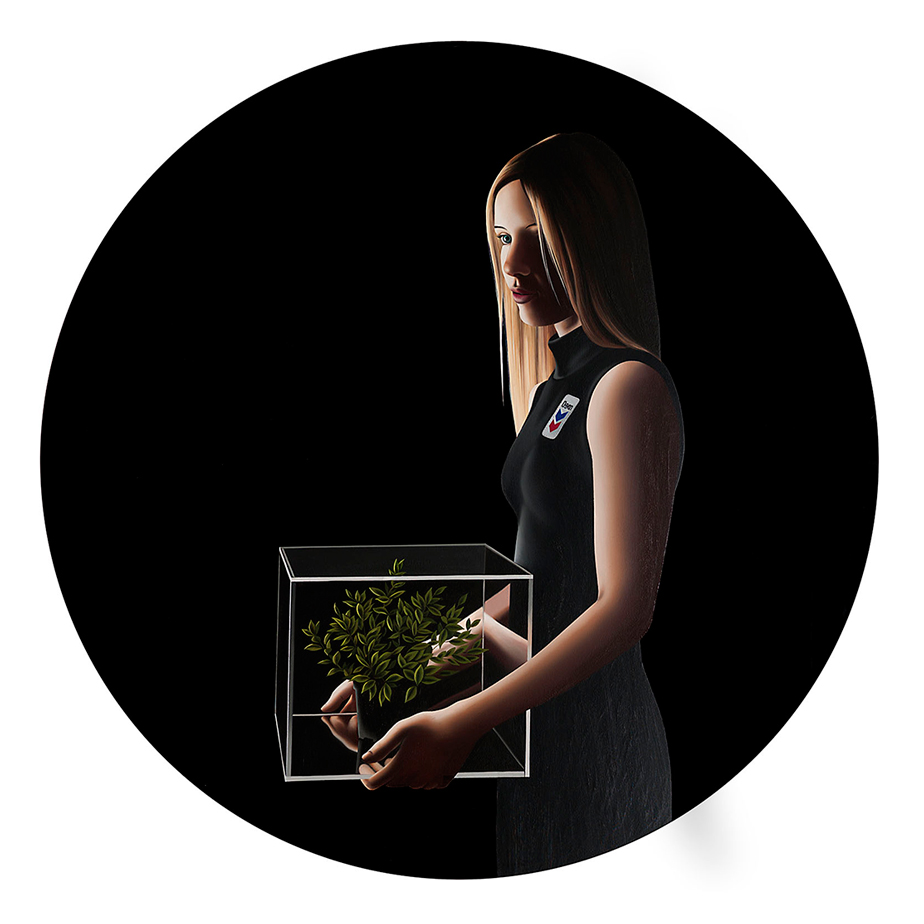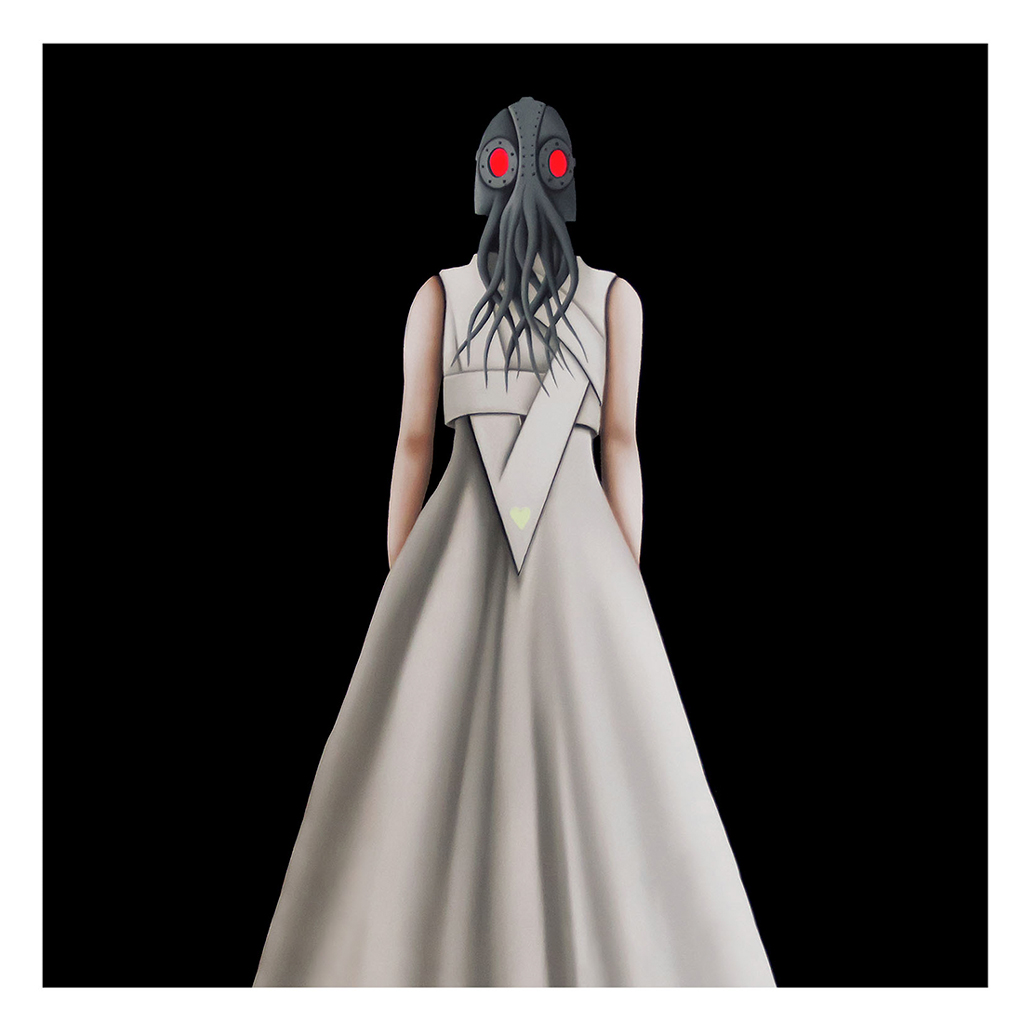MORITURI TE SALUTANT
Solo exhibition of Xevi Vilaró, curated by Conchi Alvarez
This is the first exhibition of Xevi’s work at STOA; it is a solo exhibition, an introduction if you may, to understand and appreciate the work of this brilliant Catalan artist. The genre of his work stems from the figurative world, with clear attribution to pop art, surrealism and magic symbolism throughout the forms and backgrounds that he uses in his portraits. Xevi’s compositions predominantly feature isolated figures on dark backgrounds, creating a contrasting effect of lights and shadows. This effect leads Xevi’s work down a path of suggestive and contemporary tenebrism, connecting it to Spanish Baroque, where the deep reflection on the transience of life draws attention towards the transcendent.
The work exhibited is made up of female figures that remind us, irremissibly, of Egyptian deities and classical myths. You will see women with gas masks, or anthromorphic figures with human bodies, but with an octopus or bird for a head. A mysterious symbolism dominates the compositions in which an icy, emotionless atmosphere emerges. The exhibition is a gallery of modern grim reapers and nightmare portraits constituting a 21st Century “vanitas”. The figures Xevi paints could even be said to populate the dreams and reveries of our time, representing the greatest fears that hold humanity today.
On display there are 11 pieces of artwork, in round (tondo) or square format with black backgrounds. The presiding piece of the exhibition is a tondo, a large oil on methacrylate called “6Z”. This is essentially an allegorical family self-portrait, where father, mother and son are all apes. In this piece, the artist paints a composition indebted to “Tondo Doni”, by Michelangelo, where a maternal figure dominates the scene. This is not simply due to the space the mother ape takes up, but because of the symbolism she embodies.
The rest of the works are limited edition prints, belonging to three series: Octopus, Chevron and Radioactive. In the Chevron series, one can perceive the criticism, contamination and destruction of the planet that multinational companies have caused. In the Octopus and Radioactive series, the ruthless hypocrisy and macabre game of oligarchies is uncovered, where despite their best efforts to hide behind money and elegance, their seeming naivety is exposed to the artist revealing their true, perverse face through x-ray vision.
The common thread of the narrative is the announcement of “Morituri te Salutant” (those who are going to die salute you), as a premonition and admonition of what awaits humanity if we do not take action. The images advocate the defence of a better world and are a plea to fight for it. The message is a current and very original way to paraphrase the famous work “In Ictu Oculi” by the Spanish Baroque painter, Juan de Valdés Leal (from the 17th Century), who with his “Hieroglyphs of the Last Years” raised the genre of the “vanitas” to its highest levels.















